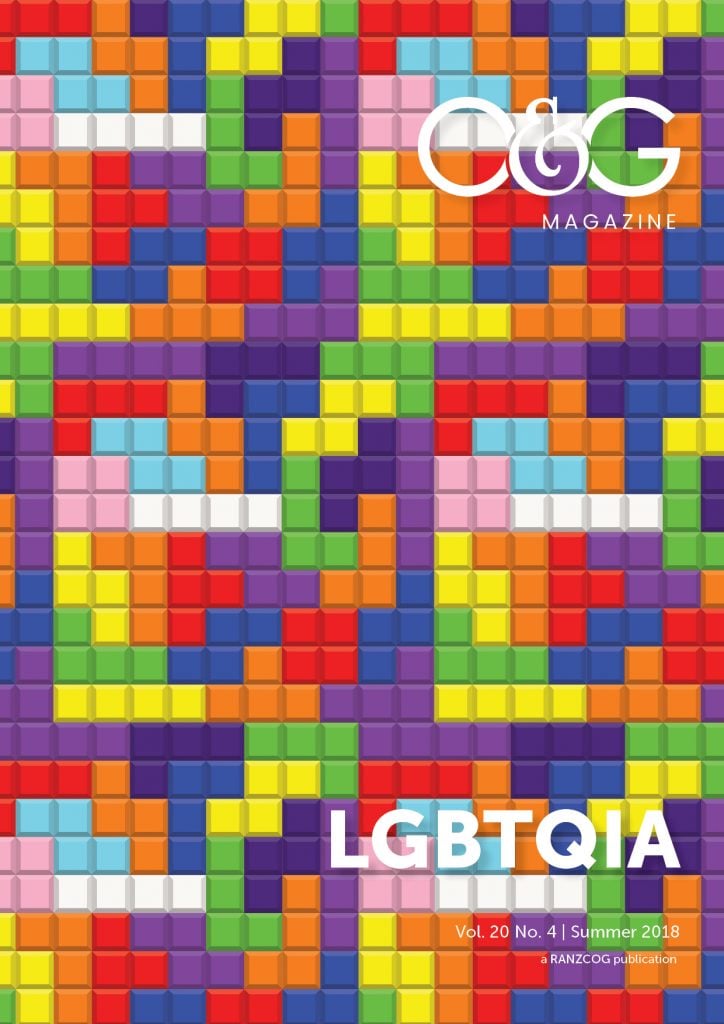In Australia, couples and individuals have the right to choose whether or not to reproduce. During the lead up to the marriage equality referendum of 2017, debate about the abilities and rights of LGBTI people to create families divided our nation. It is important to be aware, however, that two years earlier, the United Nations Human Rights Committee asked the Australian Government to comply with anti-discrimination laws by removing barriers to accessing assisted reproductive technologies (ART) for people of diverse sexuality and gender and for single people wishing to parent children on their own. Most states and territories in Australia have lifted their exemptions, but in some jurisdictions it is still permissible for ART providers to withhold treatment to patients based on their sexuality or relationship status.
There are multiple options for LGBTI people wishing to start or expand a family. Many choose to do so without seeking the assistance of a fertility clinic and options such as co-parenting, at home insemination, adoption and long-term foster care are well known and widely used. The costs and mandatory requirements, including counselling, as well as a perception of stigmatisation when receiving care through a clinic, are a deterrent for some people. There are websites and blogs within the online donor community that connect gamete donors and surrogates to those seeking their services. While these appear to offer a simple and relatively inexpensive alternative to clinic treatment, there can be risks involved. Donors may have had minimal or no screening for infectious or genetic diseases and no prior fertility testing. In addition, there may be no legal recourse for intended parents when a donor or surrogate decides, post hoc, to apply for parental rights, even if an agreement had been made to absolve the donor of parental responsibility.
In view of these issues, more couples and singles choose to attend a fertility clinic for treatment. There is now a strong focus among professionals within the fertility sector to improve services and standards of care for gender and sexually diverse patients. Over the last few years, at regional and national scientific and professional meetings, lectures and seminars on fertility options for transgender, gender diverse people and rainbow families are more common, reflecting worldwide trends in reproductive healthcare.
A significant barrier to clinic-based care is cost. For those opting to use de-identified donor sperm to conceive, price per vial of frozen quarantined sperm ranges from A$500 for a local donor to $1000 for a donor from the US. Australian clinics may prefer the availability of both local and international sperm as it brings a greater choice for patients. Donors whose gametes are utilised in Australia are limited in their donation by the ‘five family rule’, which means only five families, including the donor’s own family, can be created using their gametes. In Australia, it is illegal to pay tissue donors of any type so incentives to donate anonymously are generally low. For this reason, choice is often quite limited for de-identified local donor sperm and having access to a broad range of compatible international donors (those complying with the ‘five family rule’) is desirable.
Medicare rebates for treatment cycles do not apply until a diagnosis of medical infertility is made. For a lesbian woman attempting intrauterine insemination (IUI), this usually means three unsuccessful cycles must be completed before she is eligible to claim a rebate and then only on subsequent treatment cycles. For those requiring surrogacy to conceive a pregnancy, there are no Medicare rebates for any of the treatment costs. Fertility preservation for people who plan to undergo medical and/or surgical gender-affirming treatment is claimable through Medicare, but freezing costs are not, and these are generally around A$800–$1000 per year.
Intrauterine insemination versus IVF
Patients seeking donor sperm to conceive often prefer to start with a less invasive approach and request IUI in the first instance. This is often motivated by a belief that pregnancy will be easily achieved in an otherwise fertile individual once sperm is available, by a desire to avoid over-medicalisation, and by financial considerations. In someone with a healthy reproductive tract and patent tubes, IUI can be a valid initial treatment option, but overall, live birth rates are lower with IUI than with IVF (12 per cent versus 32 per cent for a single cycle).1 2 Once the patient becomes eligible to claim Medicare, the difference in out-of-pocket costs between IUI and IVF falls significantly. Many patients will opt to move to IVF at this time, though for some, the appeal of lower intervention with IUI means they will persevere with this approach.
Reciprocal IVF
Some women in lesbian relationships and couples with one or both parties identifying as transgender male choose to have oocytes collected from one partner fertilised with donor sperm, with the resultant embryos transferred, one at a time, to the uterus of the other partner. Given that this occurs within the context of a de-facto or married relationship, it is not surrogacy and not subject to the same legal and counselling requirements of a surrogacy arrangement. Embryos created with different combinations of gametes may not be transferred together, though this is often requested. Apart from the uncertainty of genetic parentage that arises in a subsequent conception, double embryo transfer is not recommended in most instances because of the increased risks associated with multiple pregnancy.
Options for gender diverse people
For transgender and gender diverse people, there are additional considerations related to the fertility-limiting effects of both medical and surgical approaches to transitioning. Not all gender diverse individuals choose to have surgery or take feminising or masculinising hormones. For those who wish to do so, however, the World Professional Association for Transgender Health (WPATH) in 20123 has recommended they ‘make decisions concerning fertility before starting’. This can mean that adolescents who are considering GnRH agonist treatment (‘puberty blockers’) may be referred to fertility clinics to discuss freezing oocytes or sperm. For many, this is an overwhelming decision to make when there are multiple other biological and psychosocial challenges taking priority over possible future reproduction. Cost is also a consideration as not all gender diverse young people have family or financial support through their transition.4
Once cross-sex hormonal treatment has started, fertility preservation options may diminish. Oestrogen therapy can be associated with irreversible atrophy of seminiferous tubules, but exposure of ovaries to masculinising doses of testosterone does not prevent successful controlled ovarian stimulation and ovulation after testosterone is ceased in the short term. This has enabled a number of trans men to undergo IVF and carry successful pregnancies. Testosterone therapy does not always induce anovulation, however, and spontaneous pregnancies have also been reported in trans men.5
Other reproductive options for gender diverse couples and singles depend on what is available and what is required to achieve a successful pregnancy. Use of cryopreserved gametes and/or sperm donation, oocyte donation and surrogacy are available in most states of Australia, though patients are allowed to travel interstate to access ART if necessary.
Options for gay men
Over the years, many gay men have travelled overseas to undertake surrogacy arrangements, often in a commercial setting, but recent laws restricting international surrogacy access have made this more difficult. Nevertheless, some 400 Australian couples engage surrogacy services internationally each year. Most gay men opt for treatment in the US or Canada. Australians are no longer able to travel to Nepal, Cambodia, Thailand or India to do surrogacy.6
Apart from WA, all states permit gay couples to undertake altruistic surrogacy in Australia. Most elect to use an oocyte donor and a surrogate separately, in an arrangement known as gestational surrogacy. Very few clinics allow traditional surrogacy, where the surrogate’s own oocytes are used to create the embryo. There is anecdotal evidence that non-relinquishment will be more likely in cases of traditional surrogacy.7
References
- Farquhar CM, Brown J, Arroll N, Gupta D et al. A randomized controlled trial of fallopian tube sperm perfusion compared with standard intrauterine inseminaton for women with non-tubal infertility. Hum Reprod 2013 Aug;28(8):2134-2139.
- Chambers GM, Paul RC. Harris K, Fitzgerald O, et al. Assisted reproductive technology in Australian and New Zealand: cumulative live birth rates as measures of success. Med J Aust 2017 Aug;207(3):114-118.
- WPATH Standards of Care for the Health of Transexual, Transgender and Gender Nonconforming People, version 7 (2012). World Professional Association of Transgender Health. www.wpath.org.
- Chen D, Simons L, Johnson EK, et al. Fertility preservation for transgender adolescents. J Adolesc Health 2017 Jul;
61(1):120-123. - Light AD, Obedin-Maliver J, Sevelius JM, Kerns JL. Transgender men who experienced pregnancy after female-to-male gender transitioning. Obstet Gynecol 2014 Dec;124(6):1120-1127.
- https://surrogate.com/about-surrogacy/types-of-surrogacy/traditional-vs-gestational-surrogacy-whats-best-for-my-family/.
- https://surrogate.com/about-surrogacy/types-of-surrogacy/traditional-vs-gestational-surrogacy-whats-best-for-my-family/.






It was not a referendum. The fact that it was a non binding postal survey only drove the national humiliation deeper in.
Impressive! Thanks for sharing this